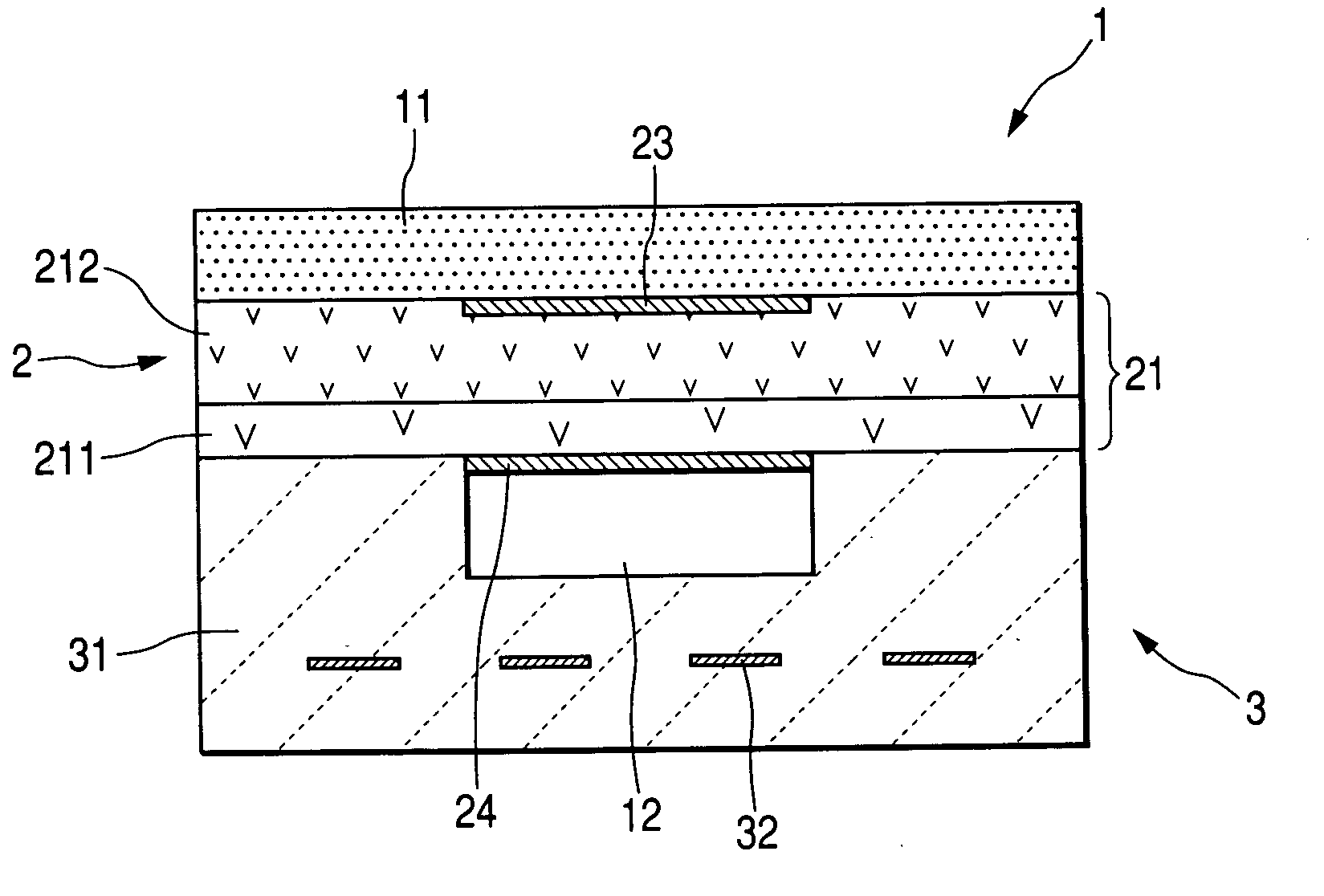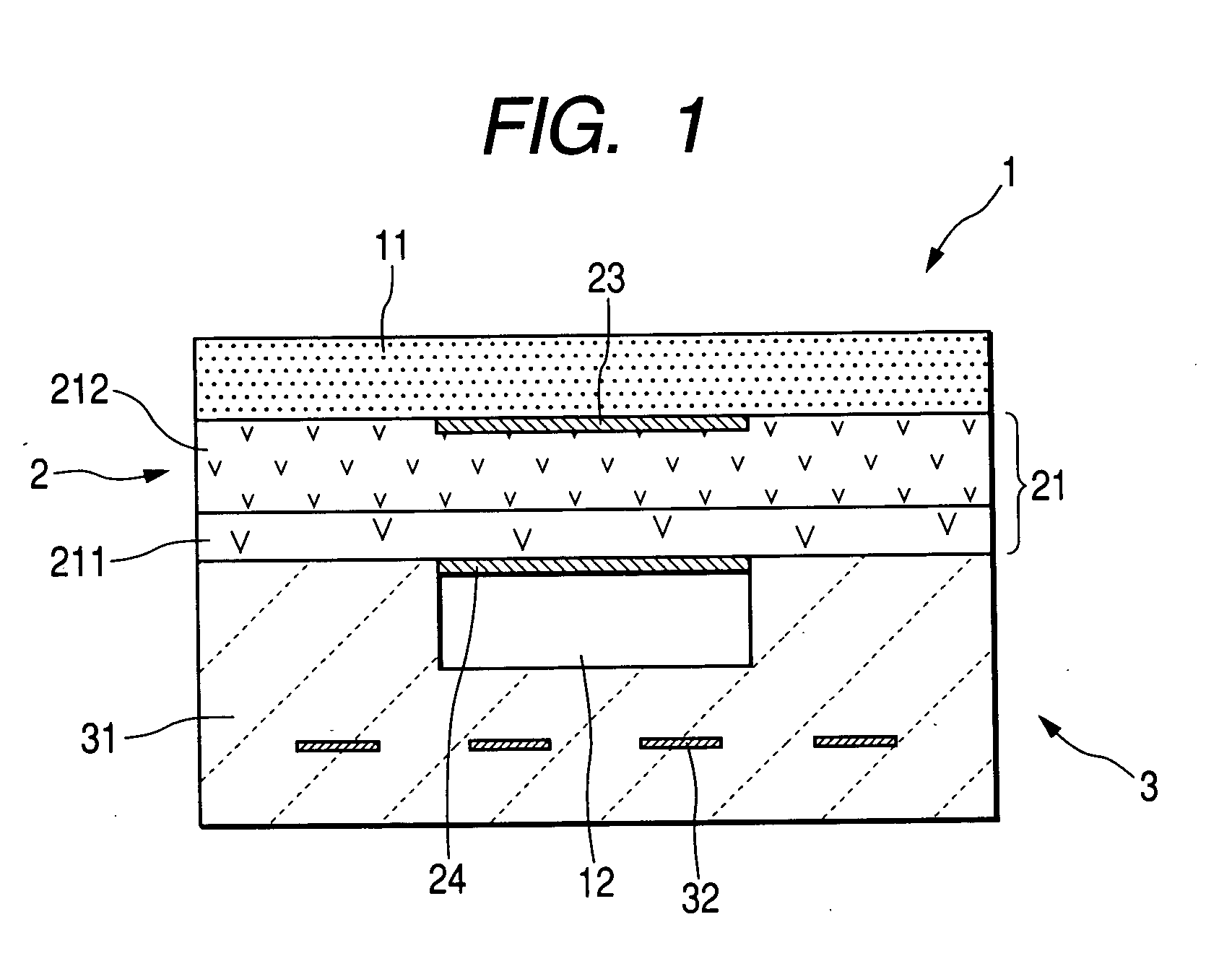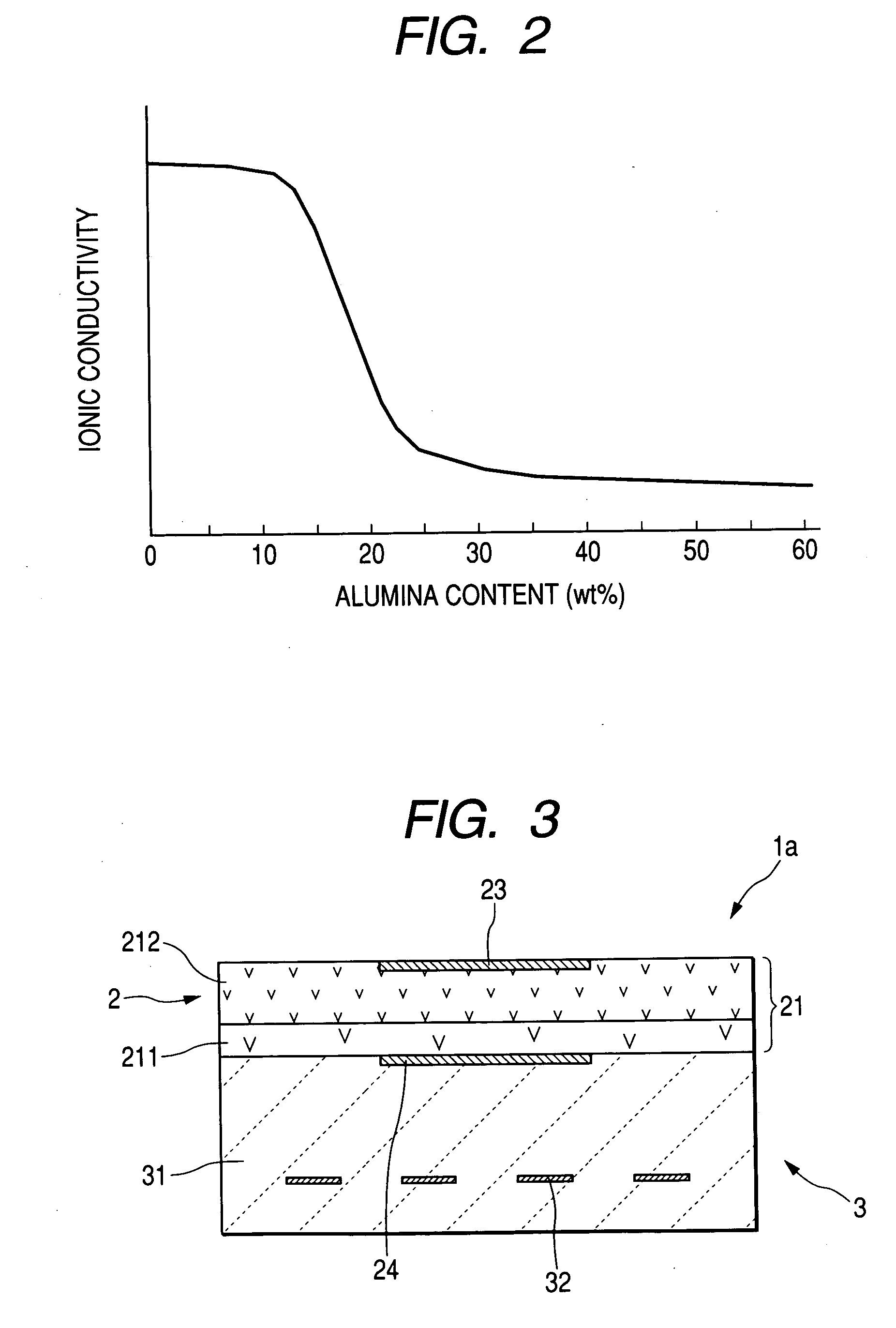Multilayered gas sensing element
a gas sensing element and multi-layered technology, applied in the direction of measurement devices, material electrochemical variables, instruments, etc., can solve the problems of warpage or exfoliation (or separation), the content of insulating ceramic in the solid electrolytic substrate cannot be sufficiently suppressed, and the lowering of the content of insulating ceramic in the solid electrolytic substrate cannot achieve satisfactory ionic conductivity, reduce the content of insulating ceramic, and suppress the effect of warpag
- Summary
- Abstract
- Description
- Claims
- Application Information
AI Technical Summary
Benefits of technology
Problems solved by technology
Method used
Image
Examples
first embodiment
[0046] A multilayered gas sensing element in accordance with a first embodiment of the present invention will be explained with reference to FIGS. 1 and 2. The multilayered gas sensing element 1 of this embodiment, as shown in FIG. 1, includes a sensor cell 2 and a ceramic heater 3 integrally laminated. The sensor cell 2 includes a solid electrolytic substrate 21. The ceramic heater 3 includes a heater substrate 31. The solid electrolytic substrate 21 contains zirconia as a main component of the ionic conductive solid electrolyte (i.e. electrolytic main component). Furthermore, the heater substrate 31 contains alumina (i.e. insulating ceramic) as a main component. According to this embodiment, it is possible to use barium oxide or lanthanum oxide as the electrolytic main component of the solid electrolytic substrate 21. It is also possible to use mullite, spinel, or steatite as the insulating ceramic of the heater substrate 31.
[0047] The solid electrolytic substrate 21 includes a f...
second embodiment
[0061] The second embodiment of the present invention, as shown in FIG. 3, discloses a multilayered gas sensing element 1a having no porous diffusion layer (refer to reference numeral 11 in FIG. 1) provided on the sensor cell 2. Furthermore, the multilayered gas sensing element 1a of the second embodiment has no reference gas chamber (refer to reference numeral 12 in FIG. 1) formed as an inner space located between the ceramic heater 3 and the sensor cell 2. The rest of the multilayered gas sensing element 1a is structurally identical with the multilayered gas sensing element 1 explained in the first embodiment. Accordingly, this embodiment can provide an excellent multilayered gas sensing element capable of suppressing warpage or exfoliation and securing satisfactory sensor output. Furthermore, this embodiment can bring the same functions and effects as those of the first embodiment.
third embodiment
[0062] The third embodiment of the present invention, as shown in FIG. 4, discloses a multilayered gas sensing element 1b characterized in that the alumina content of the solid electrolytic substrate 21 decreases with increasing distance from the ceramic heater 3. More specifically, the solid electrolytic substrate 21 has the alumina content gradually decreasing from one side facing to the ceramic heater 3 (i.e. the lower side in FIG. 4) to the other side far from the ceramic heater 3 (i.e. the upper side in FIG. 4). The rest of the multilayered gas sensing element 1b is structurally identical with the multilayered gas sensing element 1 explained in the first embodiment.
[0063] According to the arrangement of the third embodiment, it becomes possible to decentralize the thermal stress acting during the sintering operation. Thus, the multilayered gas sensing element 1b of the third embodiment can suppress warpage or exfoliation. Furthermore, the multilayered gas sensing element 1b of...
PUM
| Property | Measurement | Unit |
|---|---|---|
| thickness | aaaaa | aaaaa |
| thickness | aaaaa | aaaaa |
| thickness | aaaaa | aaaaa |
Abstract
Description
Claims
Application Information
 Login to View More
Login to View More - R&D
- Intellectual Property
- Life Sciences
- Materials
- Tech Scout
- Unparalleled Data Quality
- Higher Quality Content
- 60% Fewer Hallucinations
Browse by: Latest US Patents, China's latest patents, Technical Efficacy Thesaurus, Application Domain, Technology Topic, Popular Technical Reports.
© 2025 PatSnap. All rights reserved.Legal|Privacy policy|Modern Slavery Act Transparency Statement|Sitemap|About US| Contact US: help@patsnap.com



